3 things I learned in Tainan, Week 1
National Cheng Kung University (NCKU), Kuang-fu campus
National Cheng Kung University (NCKU) was founded in 1931 during the Japanese era, and has a beautiful, spacious campus full of ancient trees, elegant colonial buildings, and well-known science and engineering schools.
The Minor West Gate was built in 1725, and is one of the longest segments of what remains of old Tainan city, much of which was demolished during the Japanese era. It’s a lovely way to enter the Kuangfu campus.
The language centre is located in the Kuangfu campus. I’ve been here a week, and have been slowly settling into and adapting to a new routine centred around 18 hours of Chinese class a week. Here are a couple of things I’ve learned so far.
“Slow life” is earned, not given.
One of the reasons I chose Tainan was the hope that it would offer a slower pace of life and a more robust language learning environment (aka not much English) than Taipei, which is faster-paced and more international.
Amidst the shock of the heat, the absence of signage in English, a less developed public transport system (no metro), I found myself thinking: “Why am I here and not in Taipei?”
That feeling of impatience, discomfort, not wanting to tune in to what’s there and constantly missing what’s not - I realized after a few days that this is what was standing between me and an appreciation of what’s here in Tainan.
Heat, heat and heat
OK I knew it was going to be hot, but I’m used to cities like Hong Kong and Taipei where you can easily shelter from the heat by diving into a metro, an air-conditioned coffee shop or tea room, a mall. Here in Tainan the area around the campus is a gigantic grid of big intersections with no trees. Waiting for the green light to cross is like being inside a rice cooker. Even the UV umbrella doesn’t help much at noon.
So I have learned to find pit-stops everywhere to break up any journey of more than 10 minutes on foot. Here’s my favourite on-campus coffee and tea place, The Pool. Their kumquat, osmanthus, lemongrass tea with ice is a lovely heat antidote.
The joys of “slow writing”
One of the main complaints students have concerns the use of traditional characters. They have many more strokes, take longer to write and, above all, most of the Chinese studies programs in universities all over the world don’t teach them.
As a child growing up in Hong Kong, I had to learn and write traditional characters. I hated them. The day I quit formal Chinese class at my school was my “Liberation Day”. I was 10, and so happy to be done with feeling ashamed of my characters, getting D for calligraphy, the dreaded after-school tutoring, the tedium of trying to squish all those strokes into the tiny square box. I remember thinking: “Never again.”
This week, I’ve been writing all my homework by hand in traditional characters and it does take ages. But after spending more than an hour and a half on a 2-page assignment, I suddenly noticed I felt good. I had been so immersed trying to keep the characters neat, and not let my wrist just slump into the void, I hadn’t even noticed the time passing, or felt stressed about how to dodge the heat to find my next meal.
Notes from my chengyu (traditional 4-characher Chinese idioms) class
That’s it for Week 1. It’s been tough, but I’m very grateful for the opportunity to be here. It is a great learning environment - teachers, fellow students, the well-endowed campus - my brain is fried from adapting, but I’m also grateful for this newsletter which helps me to put a few thoughts in order. See you all next week!


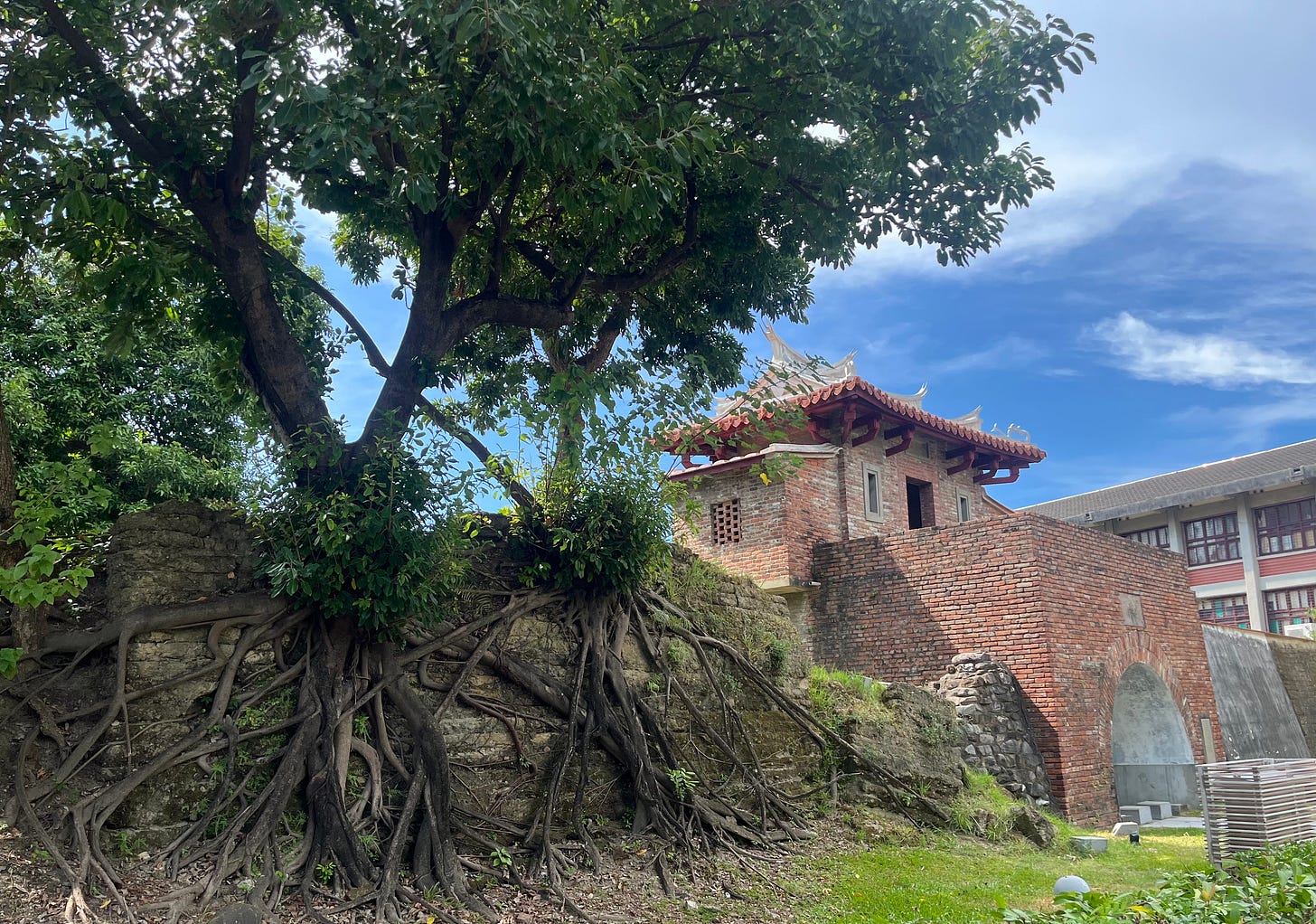
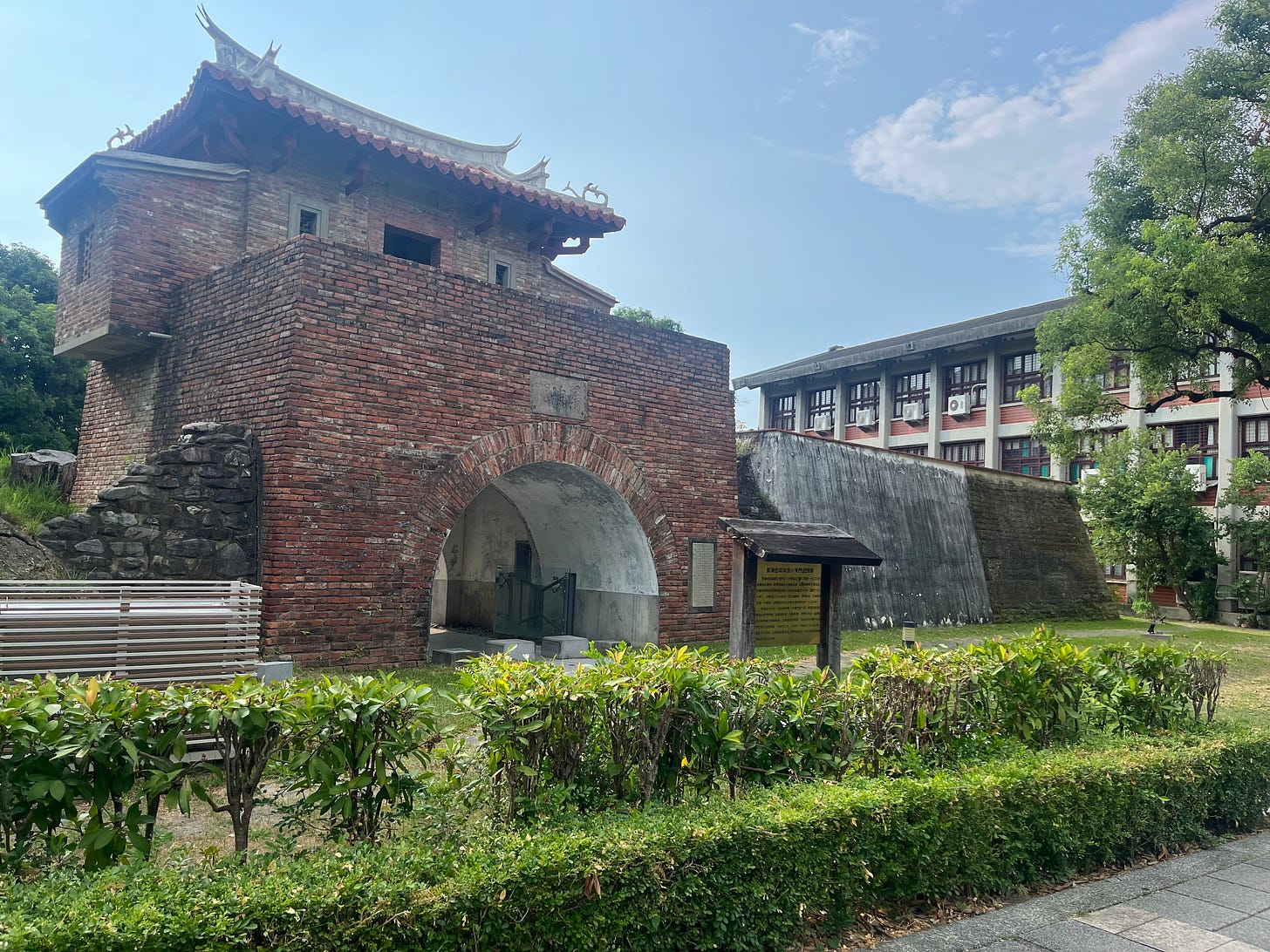
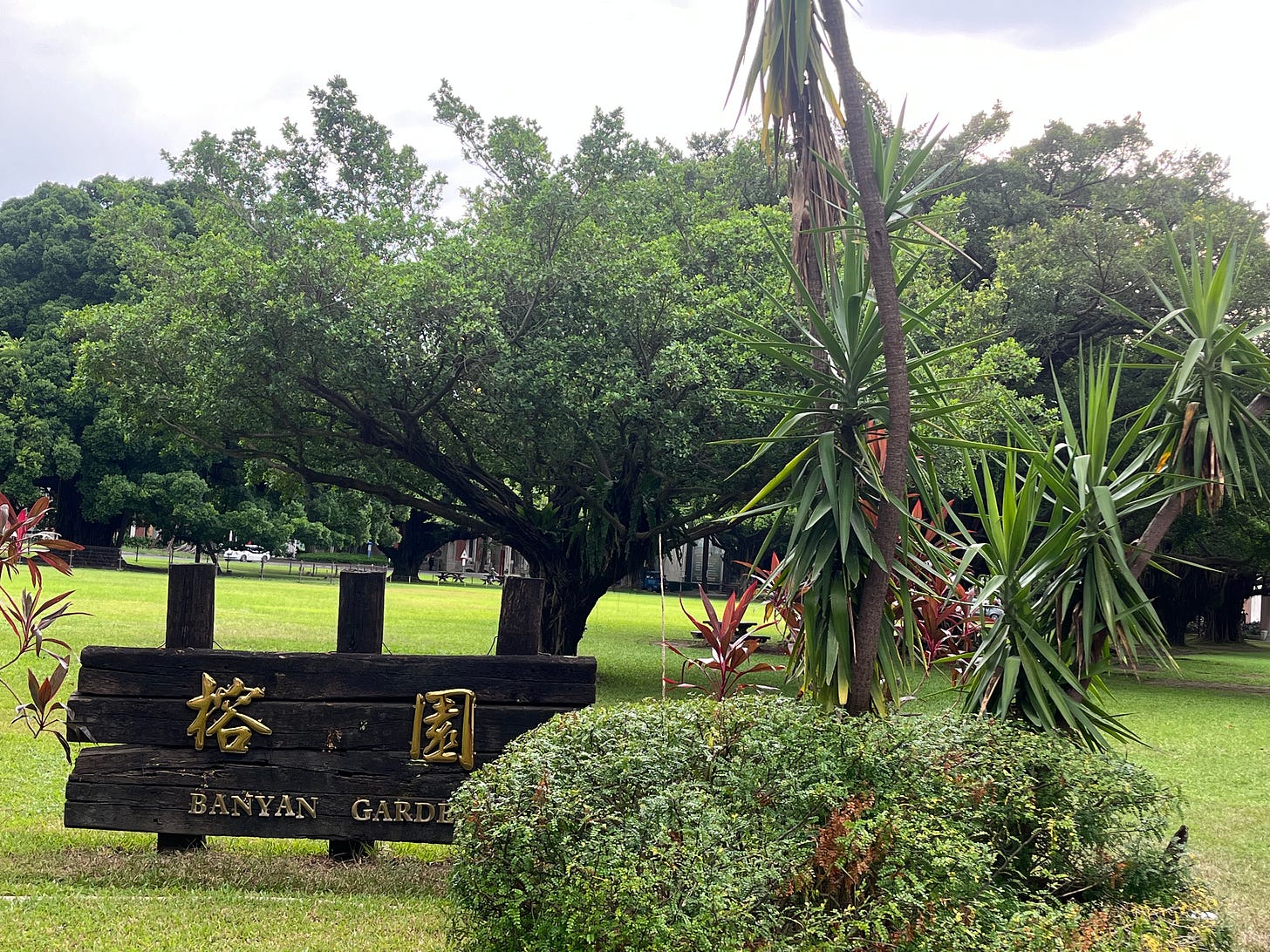
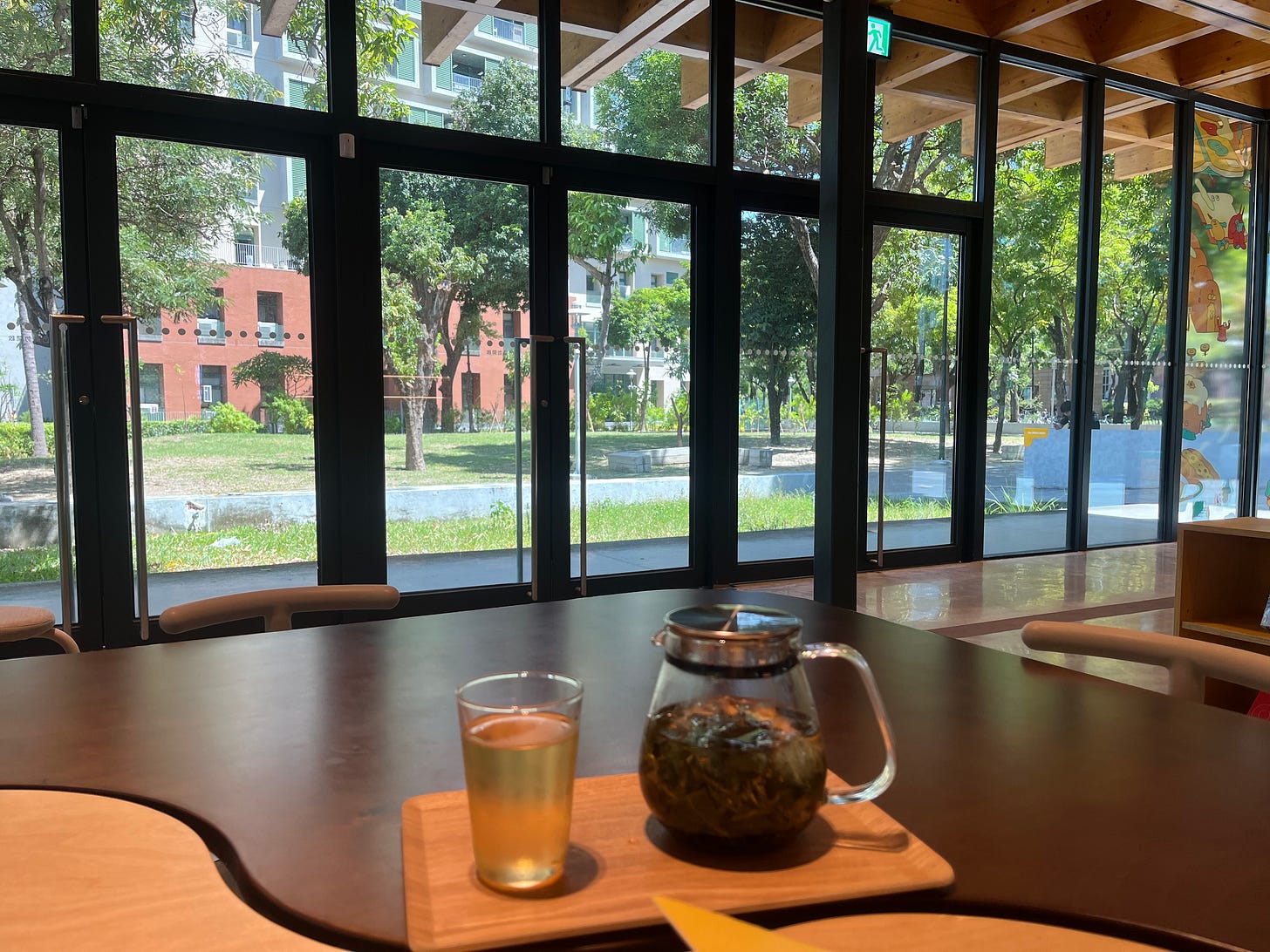
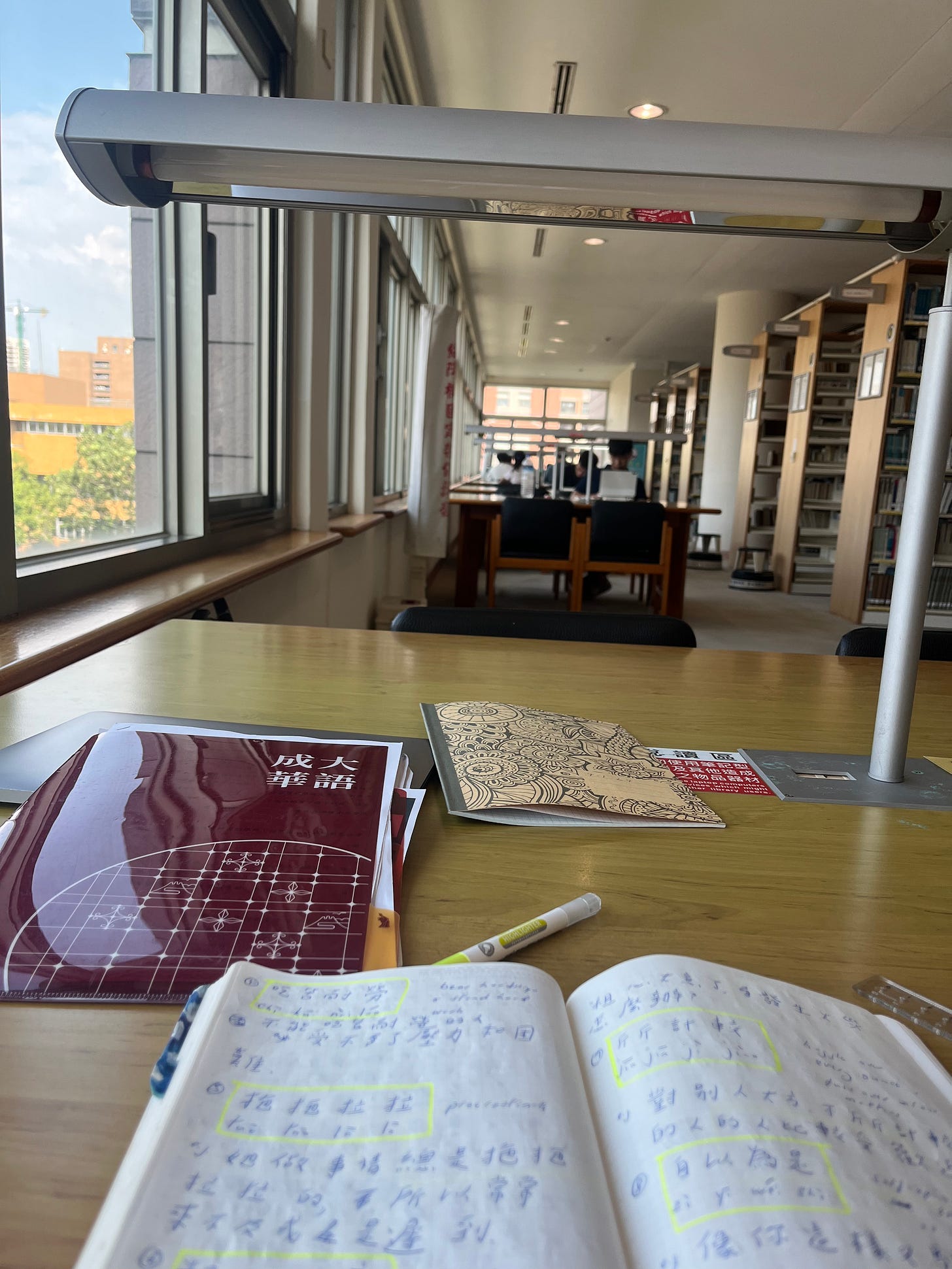
Fascinating!You are taking readers under your wing and I for one am ready for this ride! This is an unfamiliar world to me that you have entered. I am intrigued by how not having your basic comforts of shade and scribbling cursive with a Bic pen might impact your outlook as you move forward. Keep posting!!!!
This made me smile! I can remember how much you hated to practice your characters in Camden when we were kids!